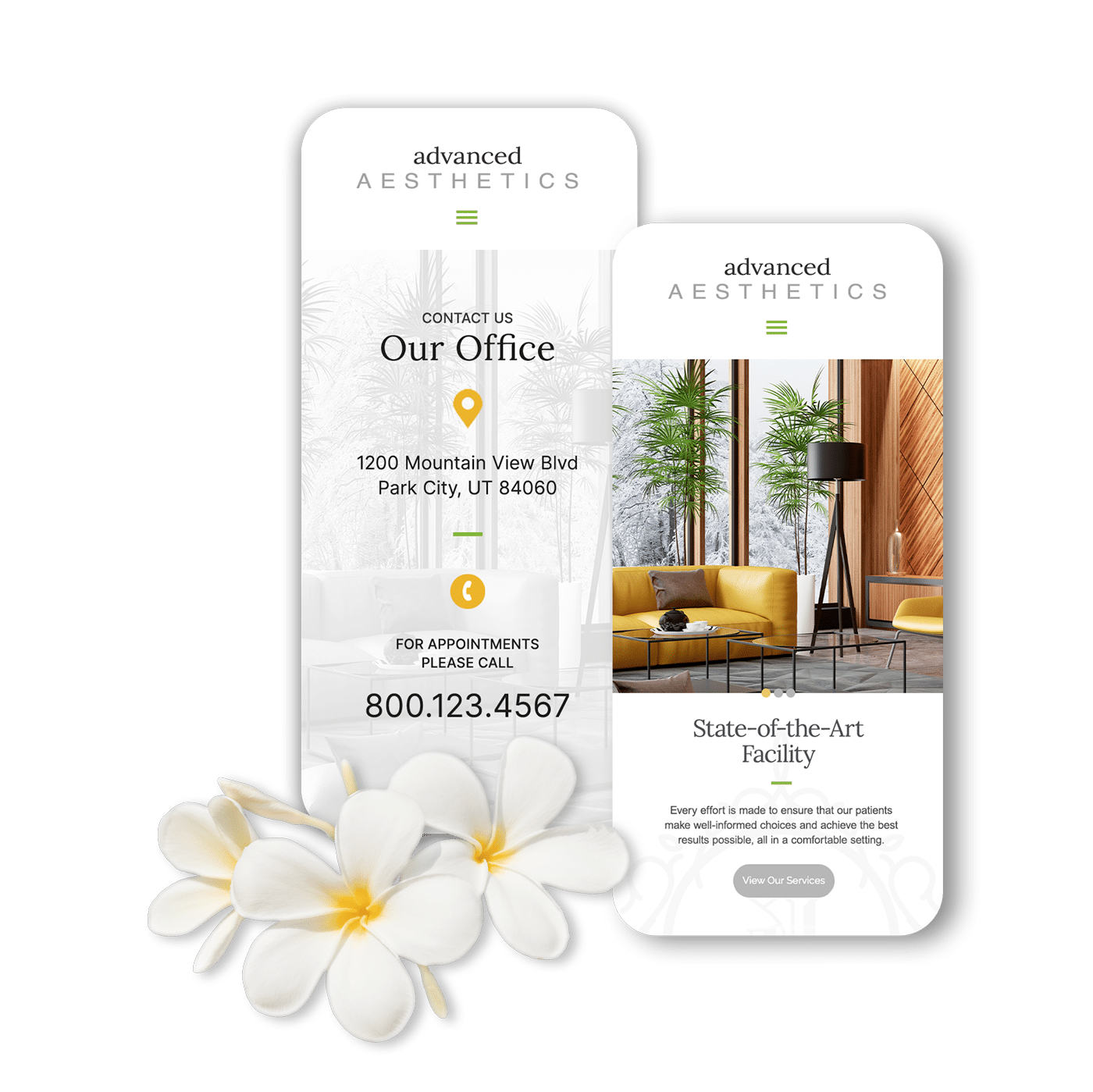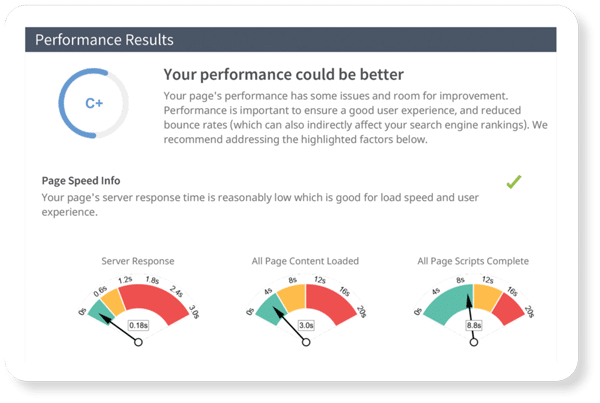
What Should You Know About Plastic Surgery Website Design?
The plastic surgery industry is highly competitive – so what makes a plastic surgery website design stand out? Web design holds immense importance for plastic surgery practices as it serves as the digital face of the clinic, making the first impression on potential patients. Done well, plastic surgery website design conveys professionalism, expertise, and trustworthiness, key factors in the plastic surgery industry. It not only showcases before-and-after photos, demonstrating the practitioner's skills, but also provides essential information about various procedures and recovery processes, empowering patients to make informed decisions. User-friendly navigation and clear calls to action help to simplify the process of scheduling consultations or contacting your practice. Aesthetically pleasing, mobile-responsive plastic surgery websites enhance user experience, increasing the likelihood of engagement and conversion. In a competitive field like plastic surgery, effective website design is not merely a digital presence; it's a powerful tool for attracting and retaining patients, ultimately contributing to the practice's success and growth.

What makes cosmetic surgery website design good?

1 |
Good design for plastic surgery websites is beautiful and functional.
In contemporary web development, the concept of plastic surgery web design has evolved far beyond its traditional understanding, which primarily focused on the visual aesthetics of a website. Nowadays, effective web design encompasses a multifaceted approach that takes into account the diverse landscape of devices and browsers through which users access websites. This shift in perspective is driven by the increasing variety of devices, screen sizes, and browsers available to users.
In today's digital age, websites are no longer confined to being viewed solely on desktop computers with standard web browsers. Users researching for plastic surgery procedures and surgeons now access websites on an extensive array of devices, including smartphones, tablets, smart TVs, and even wearable technology. Moreover, there is a plethora of web browsers available, each with its own rendering engine and compatibility quirks. This dynamic environment presents a significant challenge to web designers and developers: ensuring that a website functions seamlessly across this wide spectrum of devices and browsers.
What is responsive design?
Responsive design has emerged as the solution to this challenge. It's a holistic approach to web design that involves creating websites that can adapt and respond effectively to whatever specific characteristics of device and browser combination are being used. Responsive design aims to ensure that users experience a consistent, user-friendly, and visually appealing website interface regardless of whether they are accessing the site on a large desktop monitor using Google Chrome or on a small smartphone screen using Safari.
Don't just take our word for it – MyAdvice has been building beautiful websites for cosmetic surgery and plastic surgery practices like yours for more than 20 years.
2 |
Meeting accessibility standards is important for plastic surgery practices.
The significance of adhering to the accessibility standards set forth by the Americans with Disabilities Act (ADA) cannot be overstated in today's digital age. These standards are not just regulatory requirements; they represent a critical step towards ensuring that the internet is an inclusive and equitable space for all users, including those with disabilities.
The ADA, enacted in 1990 and later updated to include digital accessibility guidelines, mandates that websites must meet specific accessibility standards to ensure that individuals with disabilities can navigate and interact with digital content effectively. These standards encompass various aspects of web design and development, including but not limited to providing alternative text for images, ensuring keyboard navigation compatibility, captioning multimedia content, and creating content that is perceivable, operable, and understandable by all users.
Failure to meet these accessibility standards carries significant consequences that many web developers and designers may not fully appreciate until they face them. One of the most immediate and impactful consequences is the potential for substantial fines. The penalties for non-compliance with ADA standards can be staggering, with initial penalties ranging from $55,000 to $75,000. These fines can place a substantial financial burden on plastic surgery practices, especially small and medium-sized enterprises.
Beyond the financial implications, non-compliance can lead to legal woes. Lawsuits related to accessibility violations are on the rise, and they can result in additional fines, penalties, and legal expenses. Such lawsuits not only drain a company's resources but also damage its reputation and erode trust among its user base.
However, the consequences of marketing companies failing to meet accessibility standards extend far beyond financial and legal repercussions. Accessibility is fundamentally about inclusion and ensuring that everyone, regardless of their abilities, has equal access to digital resources. By neglecting accessibility, websites effectively cut off nearly 1.4 billion people with disabilities worldwide from accessing information, services, and products online. This not only goes against the principles of equality and inclusivity but also represents a missed opportunity for businesses to tap into a vast and diverse audience.
Many search engines, including Google, have algorithms that prioritize accessible websites in search rankings. In other words, websites that are accessible are more likely to rank higher in search results, increasing their visibility to a broader audience. Conversely, websites that do not meet accessibility standards may be penalized in their search engine optimization rankings, leading to reduced visibility and potential loss of traffic and revenue.

4 |
What are good conversion rates for plastic surgery website design?
If you don't monitor and understand your website's conversion rate, you're missing out on a vital piece of plastic surgery marketing. The conversion rate is a vital metric that offers valuable insights into how effectively your website is transitioning casual visitors into patients.
While what constitutes a "good" conversion rate can vary across different industries and niches, it's generally advisable for plastic surgery websites to aim for a conversion rate around 3%. Achieving this benchmark suggests that your plastic surgery website is doing a commendable job in persuading visitors to take the desired action, whether it's scheduling a consultation, requesting more information, or initiating contact.
However, if your website's conversion rate falls below this target, it's an indication that something may need attention. This situation calls for a closer examination of your website's design and content, with a particular focus on the elements that directly contribute to conversion.
Conversion elements strategically placed throughout your plastic surgery site play a pivotal role in marketing and in encouraging visitors to take action. They can take various forms, including a prominent click-to-call button, user-friendly forms, engaging chat widgets, and a well-structured "Contact Us" page. These elements act as the bridge between a visitor's interest and their decision to connect with your plastic surgery practice.
There are several reasons why these conversion elements might underperform, and a comprehensive analysis is essential to pinpoint the issues. Here are a few:
-
Technical Issues: Sometimes, conversion elements may be broken or not functioning correctly, hindering the user's ability to initiate contact or submit information. Regularly testing and maintaining these features is crucial.
-
Visibility and Placement: The location and prominence of conversion elements matter greatly. If they are buried deep within your website or not easily accessible, visitors may miss them. Optimizing their placement and ensuring they are visible throughout the user journey can make a significant difference.
-
Content and Messaging: The language and messaging associated with conversion elements also play a critical role. Clear and compelling calls-to-action (CTAs) can boost engagement and encourage visitors to take action. Additionally, the content surrounding these elements should instill trust and convey the benefits of choosing your cosmetic surgery practice.
-
Mobile Responsiveness: In an era where many users access websites from mobile devices, ensuring that conversion elements are mobile-friendly is paramount. If they do not display correctly on smartphones or tablets, it could deter potential patients.
-
User Experience: The overall user experience on your website can impact conversion rates. A cluttered, confusing, or slow website may discourage visitors from taking action, while a well-designed, user-friendly site can enhance engagement.
-
A/B Testing: Implementing A/B testing can help you refine your conversion elements. By experimenting with different designs, messaging, and placement, you can gather data on what resonates most effectively with your audience and make informed adjustments.
Curious how your website stacks up against your competition? We built a tool for that.
Enter your website address and we’ll send you a custom report.



